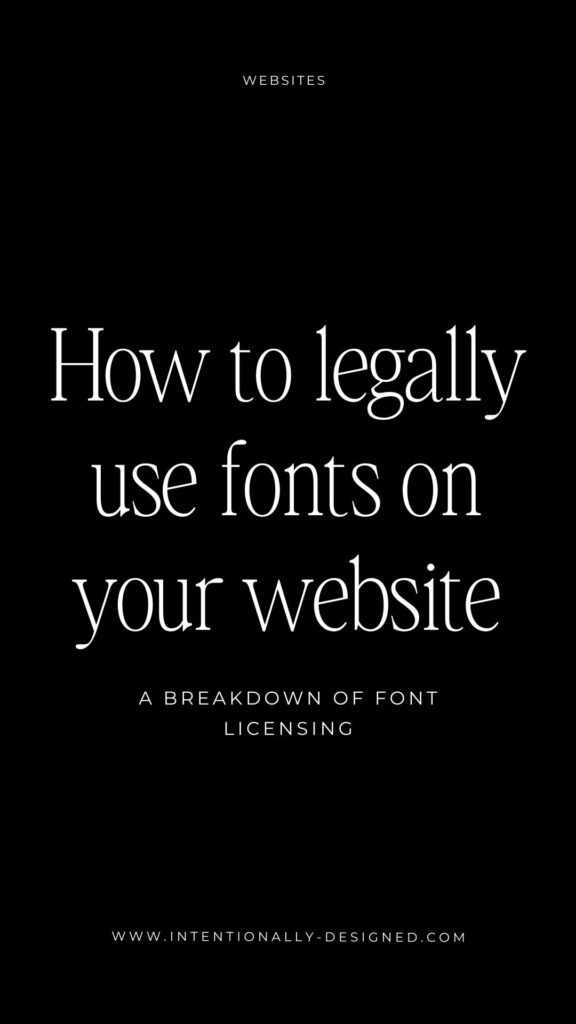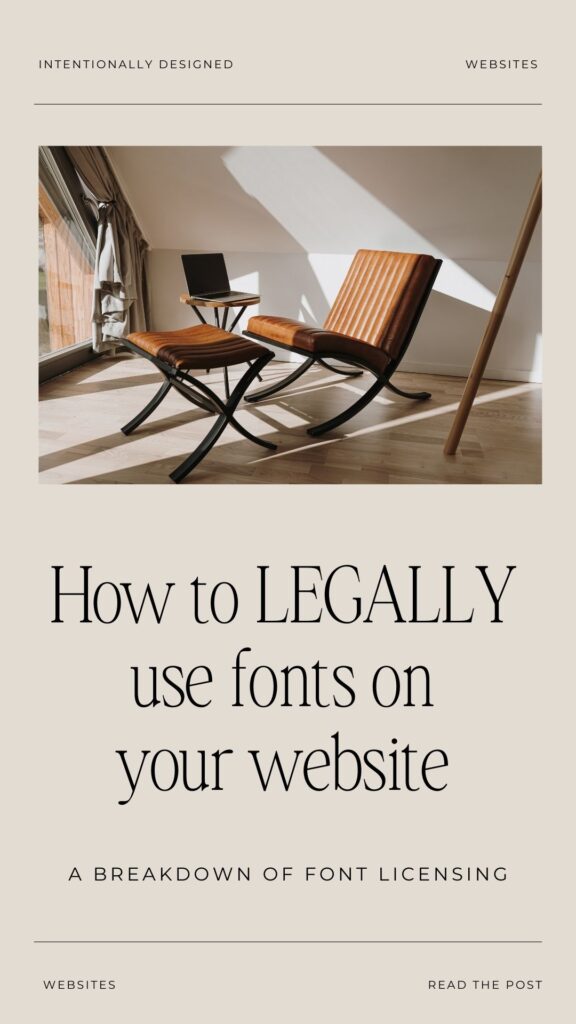Understanding font licensing is essential when incorporating fonts into your website to ensure you meet the requirements set by the font creators. Most people are unaware of this, but if you use your font the wrong way, it could result in a lawsuit. Let’s avoid legal trouble by learning how to legally use fonts on your website.
What is font licensing and why is it important?
Font licensing refers to obtaining permission from the creator or distributor to use a specific font in particular ways, such as on a website, in a document, or in an application. Fonts are protected by copyright law, so using them without proper licensing can lead to legal issues, fines, or penalties.
Font licensing is crucial for several reasons. First, it ensures legal compliance, as using a font without a license can infringe on copyright laws and result in legal consequences. Purchasing a font license also supports the designers who created the fonts, allowing them to continue producing high-quality typefaces. Additionally, licensed fonts often come with technical support, updates, and assurances of quality, ensuring consistency across different platforms and devices. Using licensed fonts demonstrates professionalism and respect for intellectual property rights.
Different types of font licensing
When it comes to using fonts for your website, it’s crucial to comprehend the font licensing requirements to avoid any legal complications. Some fonts require you to pay a fee to use them in specific ways, and this involves buying a license. However, some fonts are free, but even if a font is free, it might have restrictions or extra fees depending on how you use it. There are different types of font licenses you can get, each with its own rules and permissions. Here are some common font license types:
Free for personal use
If you’ve searched for fonts online, you’ve probably seen some labeled “free for personal use.” But what does “personal use” mean for fonts? It means using a font without making money directly or indirectly from it. For example, using a font for a school project or a sign at home is considered personal use. Even if a font is free, there’s usually a usage agreement, but you don’t have to pay for it in that case.
Commercial Use fonts
Using a font commercially means using it for your business or in ways that could make you money. For instance, using a font for business cards, logos, or company shirts is considered commercial use. If you plan to use a font for commercial purposes, you’ll probably need to buy a license for it, unless the font’s documentation says it’s free for commercial use. Commercial-use fonts always come with a usage agreement that you should read carefully to make sure you’re using the font correctly.
Desktop Font License
This license is for using fonts on your computer for things like logos, signs, and products you make for yourself or clients. The fonts usually come in TTF or OTF format.
Web Font License
With this license, you can put fonts on your website so visitors can see them, even if they don’t have the font on their computer. Some licenses have limits on how many people can visit your site each month. If your site gets lots of visitors, you might need to buy an extended license. The fonts for websites are usually in WOFF or WOFF2 format.
App Font License
This license lets you use fonts in your phone apps, computer apps, or other software. There might be limits on how many people can use your app each month.
How to make sure you’re using your fonts legally
To utilize your brand fonts on your website, you’ll need to obtain the appropriate web license for the font. This license permits legal usage of the font online. Once you’ve secured the web license, you can upload the WOFF font files to your web platform for implementation on your site. Depending on the website building and management platform you use, you may need to utilize custom CSS to incorporate the font effectively. Check your platform’s help section for specific tutorials and guidelines tailored to your platform’s requirements.
It’s important to note, for these types of fonts, if you need to use a font in multiple formats, such as for desktop and for your website, you will need to purchase font licensing for both in order to comply with the license agreements.
Recap
Font licensing may seem complex, but by familiarizing yourself with the various options and carefully reviewing license terms, you can confidently navigate the world of fonts and ensure your website is compliant while showcasing visually captivating typography. Don’t let licensing restrictions hinder your creativity—select the perfect fonts, obtain the necessary licenses, and unleash the full potential of your website’s visual appeal.
Next Steps
If you’ve got your brand style, colors, and brand fonts set, the next step in the process is to nail down your visual brand identity with a premade brand design. You can take a look at the options available in the shop to elevate the look of your brand effortlessly.
More Resources
- How to choose brand fonts and the best font resources
- How to define a consistent brand style
- Brand Style Workbook
- Premade Brands
- Website Planner Workbook
Save for later
Enjoy this article and find it helpful? Pin this image on Pinterest so you’ll always have this info on hand!








